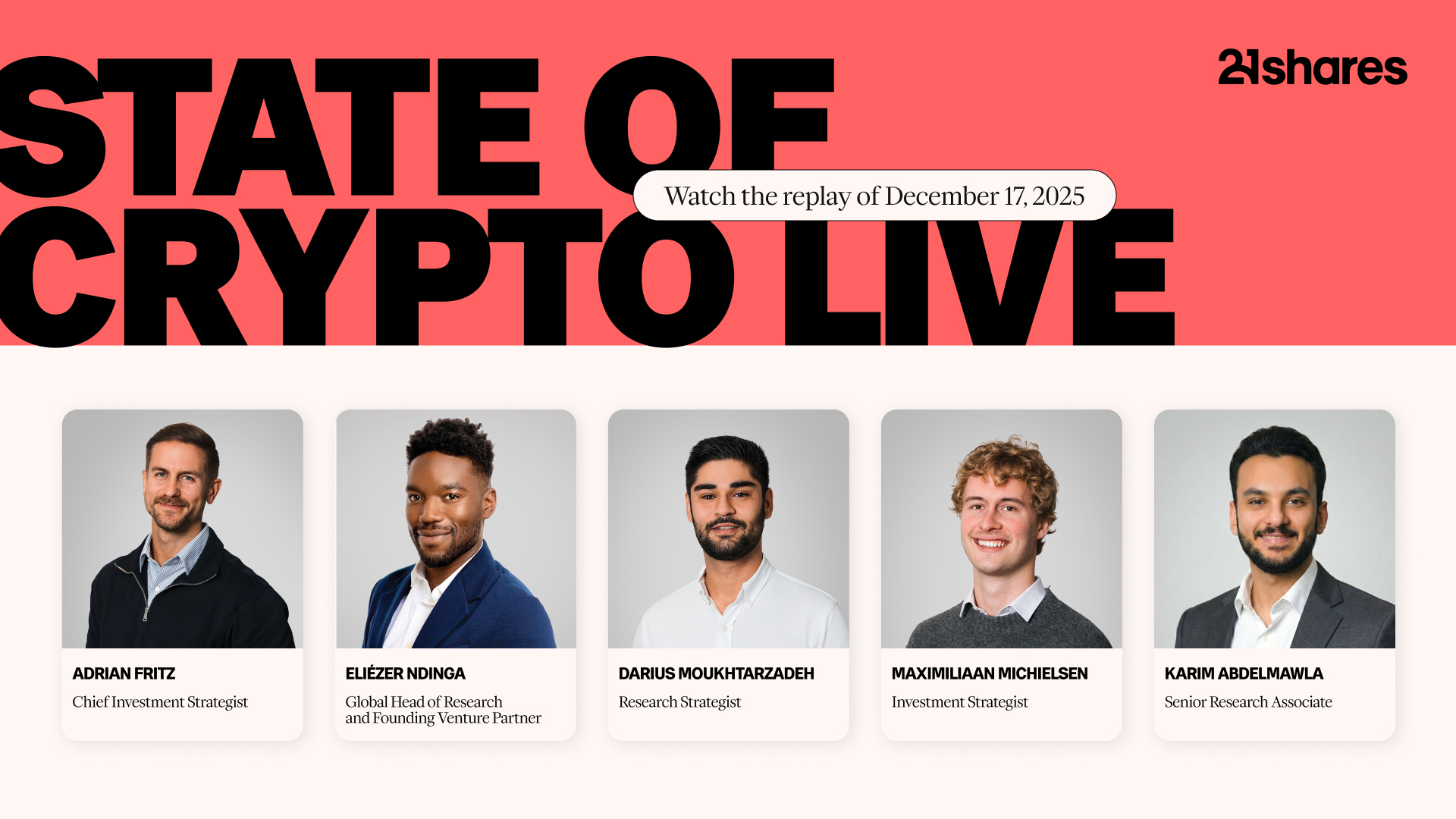The Investment Case Series #1: Blockchain, the Key Technology to Combating AI-driven Identity Risks
%20(1).webp)


TL;DR
- Blockchain technology and cryptocurrencies offer promising solutions to the identity challenges posed by AI advancements, such as deepfakes and synthetic identities.
- Blockchain-powered decentralized identity systems can provide secure and transparent authentication and verification processes, empowering users to have full control over their digital identities.
- Blockchain's ability to trace the origin of content and ensure its integrity can help counter AI-generated misinformation and establish trust in the digital realm.
- Decentralized platforms for sharing and verifying digital content can minimize the risk of AI-generated misinformation and restore trust in digital media.
- A multi-faceted approach, including technological solutions, public awareness, policy measures, and collaboration among stakeholders, is necessary to combat AI-driven identity risks effectively.
Background
In today's increasingly digital world, securing and managing digital identities has become more important than ever. However, advances in artificial intelligence (AI) present new challenges for digital identity, as deepfakes or any other AI-driven manipulations make it harder to trust information on the Internet. Blockchain technology and cryptocurrencies have the potential to address these challenges and help protect digital identity in the age of AI.
Key Takeaways
1. The Power of Blockchain for Digital Identity - Blockchain technology offers a host of benefits for digital identity management, including decentralization, which allows users to have full ownership and control over their digital identities without relying on centralized authorities. This approach not only enhances privacy and security but also enables seamless authentication and verification across various platforms and services. For instance, such an approach could improve and streamline cross-border identity verification. Traditionally, verifying identities across different jurisdictions involves complex and time-consuming procedures. Blockchain-based solutions could enable individuals to have a portable, verified digital identity that can be used across borders without relying on centralized authorities.
2. AI-Driven Identity Risks: Deepfakes and Synthetic Identities - The rise of AI technologies has introduced new risks to digital identity, such as deepfakes, which are highly convincing fake videos, images, or audio recordings of individuals created for malicious purposes. AI can also be exploited to create synthetic identities or false documents, facilitating identity theft and fraud. Privacy concerns and potential biases in AI systems also present challenges in maintaining a secure digital environment.
This could also have particularly dangerous implications for the political landscape and events, like the upcoming presidential election in the US as it is enabling the spread of misleading or fabricated content about candidates, fostering disinformation, and potentially influencing voter decisions. Ultimately, deepfake campaigns could have a significant impact on election outcomes. While it’s unclear how many deepfakes and synthetic identities are currently in existence, according to research firm HSRC, the global market for deepfake detection reached $3.86 billion in 2022, and is projected to grow at a CAGR of 42% until 2026. This indicates a strong demand for technologies and solutions aimed at identifying and mitigating the risks associated with deepfakes. While these technologies are trying to identify deepfakes, blockchain technology could potentially solve them at its roots.
3. Sybil Attacks and AI Vulnerability - AI advancements exacerbate the vulnerability of computer systems to Sybil attacks, where a single malicious entity creates multiple fake identities to manipulate a system. Blockchain-based decentralized identity systems can help mitigate this risk by providing secure and transparent authentication and verification processes, making it more difficult for malicious actors to create and use fake identities.
4. Countering AI-Driven Risks with Blockchain - Blockchain technology and cryptocurrencies offer promising solutions for combating AI-driven identity risks. By employing digital signatures, blockchain can verify the authenticity of digital content, providing an extra layer of security. This allows users to trace the origin of content and confirm that it has not been tampered with, making it more difficult for deepfakes and other manipulated content to spread. Decentralized identity systems, powered by blockchain, can help establish trust in online interactions, even in a world riddled with AI-generated misinformation. By giving users control over their digital identities and enabling secure, transparent authentication and verification processes, blockchain-based systems can provide a robust foundation for trust in the digital realm.
5. Decentralized Platforms: Restoring Trust in Digital Media - Decentralized platforms for sharing and verifying digital content, such as social media or news platforms, can leverage the transparency and security features of blockchain to ensure that content is authentic and trustworthy. By creating a decentralized infrastructure for content creation, sharing, and verification, these platforms can minimize the risk of AI-generated misinformation and help restore trust in digital media.
6. Pioneering Protocols: Gitcoin Passport and Other Innovations - Gitcoin Passport is an example of a decentralized digital identity system that addresses the issue of Sybil attacks. It is Sybil-resistant and allows users to aggregate different "stamps" of their online identity - from Web 2 sites like Twitter and Facebook to various Web 3 applications. Other protocols, such as ENS (Ethereum Name Service), POAP (Proof of Attendance Protocol), BrightID, and Proof of Humanity, also contribute to the development of decentralized digital identity systems. These protocols offer various benefits, including user-friendly domain names, proof of event participation, Sybil-resistant social identity verification, and proof of a user's unique human status. This comprehensive approach to identity verification helps create a more secure and reliable digital environment.
Closing Thoughts
Blockchain technology and cryptocurrencies hold significant potential in addressing the identity challenges posed by AI advancements. By capitalizing on the unique features of blockchain, such as decentralization, transparency, and immutability, we can create more secure and reliable digital identity solutions in the face of AI-driven risks. However, it is crucial to recognize that a multi-faceted approach, including technological solutions, public awareness, policy measures, and collaboration among various stakeholders, is necessary to effectively combat these risks and ensure the continued trust and security of our digital identities.
Obviously, the realm of identity risk represents just one facet of the remarkable synergies that can emerge from the collaboration between AI and blockchain. We could have tokenized AI services, where crypto is used to facilitate transactions and payments for AI services, streamline payments, enable micropayments, and ensure transparent, auditable transactions. AI for blockchain analytics, where AI and machine learning are utilized to extract insights from blockchain data. Personalized AI assistants that leverage blockchain for secure storage of user preferences, transaction history, and personal data.
These are just a few examples of how blockchain/crypto and AI could create synergies and ignite innovative solutions in data privacy, security, decentralized AI applications, and trustworthy transactions. However, those are all topics for future articles.
Disclaimer
The information provided does not constitute a prospectus or other offering material and does not contain or constitute an offer to sell or a solicitation of any offer to buy securities in any jurisdiction. Some of the information published herein may contain forward-looking statements. Readers are cautioned that any such forward-looking statements are not guarantees of future performance and involve risks and uncertainties and that actual results may differ materially from those in the forward-looking statements as a result of various factors. The information contained herein may not be considered as economic, legal, tax or other advice and users are cautioned to base investment decisions or other decisions solely on the content hereof.









_logo.svg)

.svg.png)